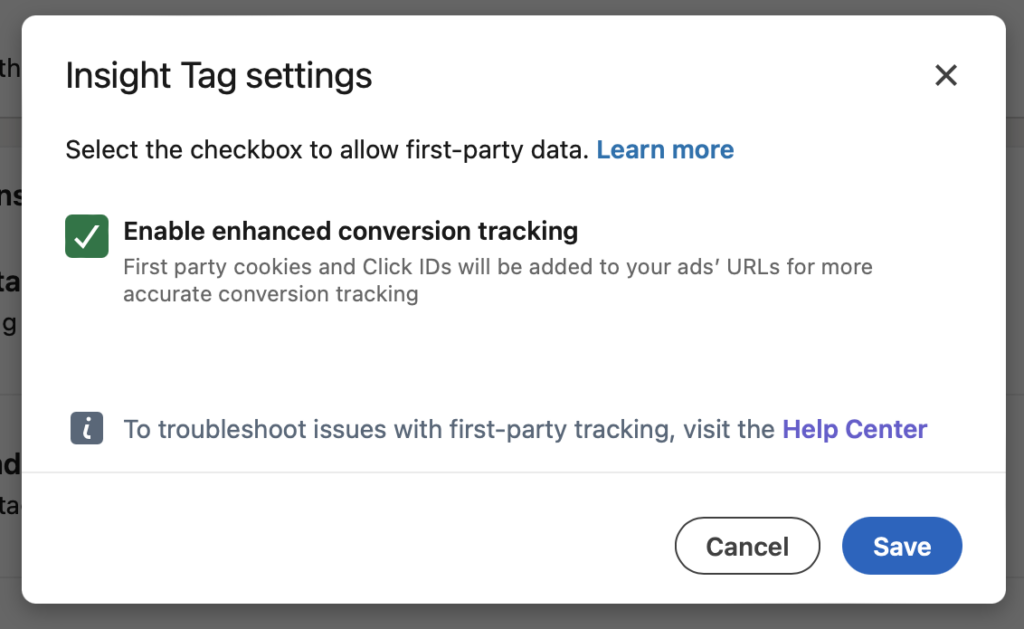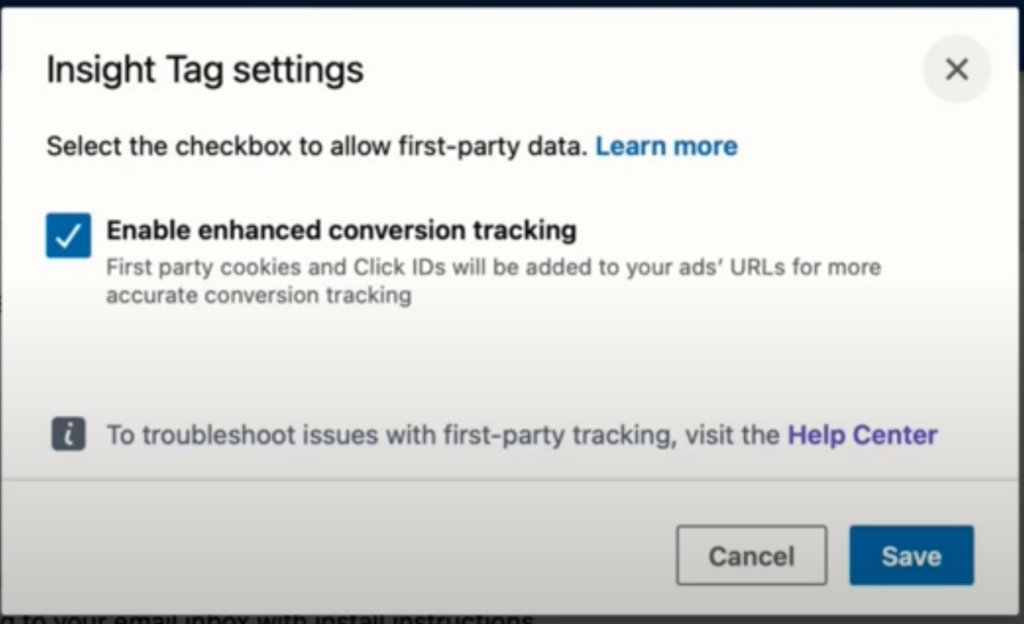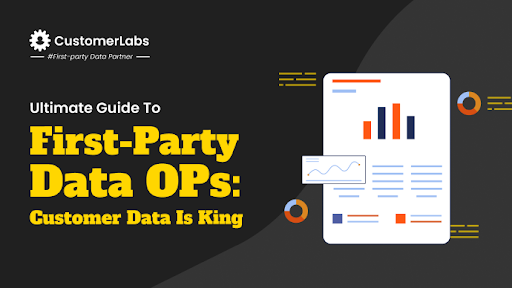Data privacy regulations and updates such as the GDPR, CCPA, third-party cookie deprecation, etc, are making it hard for marketers to gather high-quality data signals, which results in poor ad campaign performance.
Every ad platform is coming up with new techniques to navigate this situation; likewise, LinkedIn has launched its own LinkedIn Conversions API to offer a secured data connection that goes beyond cookie-tracking, enabling marketers to improve their ad campaign performance by offering high-quality signals.
In this blog, let’s see how the LinkedIn conversions API helps marketers mitigate signal loss and maximize the ad campaign’s performance.
What is LinkedIn Conversions API?
LinkedIn conversion API is a server-side integration that enables marketers to send marketing data from the business server to the LinkedIn server without signal loss.
This server-side integration helps marketers track a wide range of conversions, spanning online and offline interactions, such as website visits, lead submissions, phone calls, and in-person events.
How LinkedIn Conversions API bridges offline and online conversions gap
Let’s see how LinkedIn CAPI bridges the gap between online and offline conversion with the help of an example.
Online Journey…
Lexi a LinkedIn user was scrolling through her LinkedIn feed and noticed an ad from a well-known clothing brand offering an exclusive in-store event with stunning discounts on the newly launched apparel collection.
Lexi clicked on the ad landed on the website and started browsing the event details. After feeling comfortable with the event date and time, Lexi signed up for the form and provided her personal information like name, address, email ID, and phone number.
After submitting the form Lexi was directed to the “thank you” page where the Conversions API code is triggered, sending an event signal to LinkedIn, informing that Lexi has registered for the event by seeing their ad.
Offline Journey…
Meanwhile, a LinkedIn user named Mathew saw the same ad from the clothing brand but he preferred a personal experience. So, Matthew marked the event date in his calendar headed to the store the following weekend, and purchased many apparel from the event by leveraging advantage of the exclusive discounts offered.
At the point of sale, the shopkeeper enters Mathew’s information like name, email ID, and phone number into the POS system, which is integrated with the Conversions API is triggered, sending an event signal to LinkedIn, informing that a conversion has occurred offline by seeing their ad.
Both Lexi online registration and Mathews in-store purchase are successfully attributed to the ad campaign.
The integration results…
LinkedIn CAPI, acting as a silent bridge, connected the dots without any signal losses, providing valuable insights into how the respective ad campaign was influencing both online and offline sales.
With this high-quality signal data, marketers can analyze customer behavior, optimize their targeting, enhance their messaging, improve ad campaign performance, and ultimately, drive even better conversion rates.
Signal Quality for LinkedIn Conversions API
When marketers stream conversion events to LinkedIn, the platform evaluates the signal quality for each event. However, signal quality denotes the probability of an event’s likelihood to match a LinkedIn profile. This evaluation holds high value because it directly impacts conversion rates and the cost per result (CPR) of ad campaigns.
In essence, signal quality serves as a crucial metric in determining the effectiveness and efficiency of an ad campaign on LinkedIn.
LinkedIn has two signal-quality status
High: This means that the conversion event streamed to LinkedIn has a good chance of matching the event to the LinkedIn profile, resulting in more accurate attribution, precise targeting, and better optimization of campaigns.
Low: This means that the conversion event streamed to LinkedIn has a low chance of matching the event to the LinkedIn profile, resulting in a lower attribution rate sub-optimal targeting, and increased CPR.
Tip: To find the signal quality of a conversions API event, go to the conversion tracking page in Campaign Manager.
How can Marketers Improve the Signal Quality of Conversion Events
There are two important things marketers can do to improve the signal quality of conversion events:
Use user IDs
Send unique user IDs to match events to LinkedIn profiles. LinkedIn supports a variety of user IDs which include:
- EMAIL ID(hashed in SHA256)
- The user’s email address is hashed using the SHA-256 algorithm. It allows for secure and privacy-conscious tracking of user interactions based on email addresses.
- LINKEDIN_FIRST_PARTY_ADS_TRACKING_UUID or li_fat_id or first-party cookie click ID
- A first-party cookie click ID is a unique identifier assigned to users when they click an ad on LinkedIn. This click ID is stored as a first-party cookie in the user’s browser by the website that generated the ad. It allows marketers to track and analyze how a user behaves on the website.

- firstName and lastName
- These identifiers are based on the user’s first name and last name. While less specific than other identifiers, they can still be useful for basic segmentation and personalization.
- companyName
- This identifier are based on the user’s company name and job title, enabling the marketers to target users based on their professional attributes.
- countryCode
- This identifier is based on the user’s country code, enabling the marketers to target ads to specific regions or countries.
- LeadGenFormResponseUrn
- This identifier is specific to lead generation forms on LinkedIn. It allows advertisers to track and attribute form submissions directly to LinkedIn profiles
LinkedIn Conversions API Alongside Insight Tag with Enhanced Conversion
Insight Tag is a piece of code that helps marketers to track user activity on your website, and convey LinkedIn ads to the most important and high-intent audience. This helps LinkedIn to optimize ad campaigns and reach out to better users who have a high probability of converting.
However, as a best practice, marketers install the Insight Tag with enhanced conversion tracking alongside LinkedIn CAPI. Enable enhanced conversion tracking in settings of ‘manage Insight Tag’.
By doing so, it allows marketers to use first-party cookies, (LINKEDIN_FIRST_PARTY_ADS_TRACKING_UUID) for better tracking of website audiences and conversions.
Note: LINKEDIN_FIRST_PARTY _ADS_TRACKING_UUID, also known as li_fat_id, is LinkedIn’s first-party cookie click ID.
A first-party cookie is a small piece of data that a website stores directly in the user’s web browser. With enhanced conversion tracking enabled, LinkedIn automatically adds a unique identifier called a click ID to the end of landing page URLs (making a purchase, filling out a form, etc). This click ID and first-party cookies help the Insight Tag to track user interaction, improve signal quality, and target a better audience.

How To Set Up LinkedIn Conversions API?
There are two ways to set up LinkedIn conversion API one is via direct integration and the other is via partner integration like CutomerLabs CDP, Google Tag Manager (GTM), Zapier, etc.
Setting up LinkedIn conversion API via direct integration will consume a lot of time(minimum 2 weeks, maximum 4 weeks), developer support, and money. Whereas, setting up via partner integration like CustomerLabs CDP is easy, consumes less time, and requires no developer support.
Best Practices for Maximizing Ad Campaign Performance
Below are a few best practices that marketers can use to maximize their ad campaign performance.
Sharing event data in real-time:
Sharing events in real-time or in near real-time will help LinkedIn optimize its campaigns in real-time, resulting in better ad campaign performance.
Adjust conversion window:
Adjust the conversion window depending on your sales cycle and reporting preferences. Ideally, marketers have the option to choose a 1-day, 7-day, 30-day, or 90-day window.
Different conversion windows for different objectives:
Tailor conversion windows based on specific objectives. For lead generation campaigns, use a 90-day click and 90-day view window to capture long-term lead nurturing efforts. For website conversions, such as eCommerce, utilize a 30-day click and 7-day view window to focus on shorter sales cycles.
Choose attribution models wisely:
LinkedIn has two attribution models (last-touch each campaign and last-touch last campaign), based on campaign goals and objectives choose the appropriate attribution model. But for better attribution and understanding of individual campaign performance, utilize the “last-touch for each campaign” attribution model.
Link conversions to every campaign:
Linking conversions to every campaign helps to get a clear picture of which campaigns are performing well and which are not performing.
Conclusion
To sum it all up, LinkedIn Conversions API is the need of the hour for marketers amidst the growing data privacy concerns, and updates, to keep up the ad campaign performance. If you are looking for the right solution to seamlessly implement the LinkedIn CAPI with just a few clicks, then you’re at the right place.
With CustomerLabs 1PD tool, you can sync the data on the server-side with LinkedIn Ads without any signal loss. To get started, talk to our experts!






